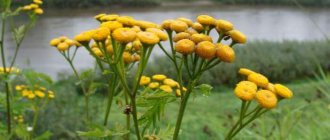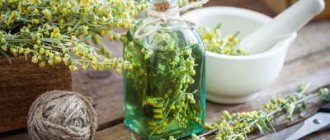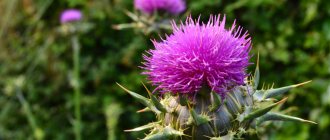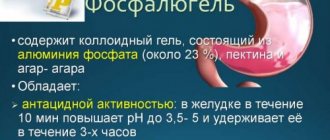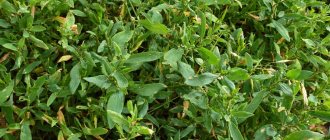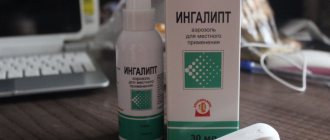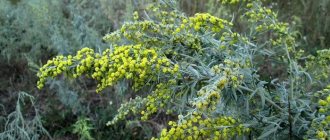Traditional medicine rarely deserves the attention of official medicine (a topic for a separate discussion - why?). Some of them are sometimes “lucky”, and among them is a distant relative of the poppy - the celandine plant. His merits are noted by the national title - “Russian ginseng”.
Infusions and decoctions of celandine are used to treat tumor diseases. Juice, extracts and decoctions of celandine have long been used to remove warts, freckles, acne, psoriasis plaques, fungi and papillomas. It is this ability that gives the grass its name. In different regions of Russia, the plant is also known as: chistolot, yellow milkweed, chistuha, warthog, etc.
Is celandine effective against cancer? Can it be an alternative to official treatment? At the end of the 19th century, Russian doctors tried to treat tumors with a plant extract, but the effect of celandine on carcinoma was weak and not effective enough.
What is celandine
Celandine is a perennial herbaceous plant belonging to the poppy family. Widely distributed in the temperate climate of Eurasia. Typically grows throughout Europe with the exception of northern Scandinavia and Iceland. This plant can also be seen in the Canary Islands, Madeira, Morocco, northern Algeria, New Zealand and North America. The southern border of the celandine's range passes through Turkey, Iran, Kazakhstan and southern China. And the easternmost point where this grass grows is called the Japanese islands. As a rule, it grows along roads, on the outskirts of damp forests, especially beech and hornbeam. Often found in gardens and parks. Celandine loves fertile soil enriched with humus. And around the 16th century in Europe, celandine was grown as an ornamental plant.
Content:
- What is celandine
- Chemical composition and beneficial properties
- Benefits for the body
- Use in folk medicine
- Use in cosmetology
- How to prepare correctly
- Daily norm and dosage
- Contraindications
- How else can you use it?
This is a small plant, it rarely grows higher than 75 cm. Its light green leaves are divided into 5-7 oval-shaped segments. The underside is slightly fuzzy. The first yellow flowers (up to 2 cm in diameter) appear on the bushes in the spring and do not disappear until the beginning of autumn. When the grass fades, narrow elongated “capsules” with black shiny seeds are visible on it. In places where the stem is damaged, orange-yellow juice oozes, which is both poison and medicine. It is because of this juice that the plant is popularly called yellow milkweed, yellow milkweed, and devil's milk. Although other names are also known, for example, swallow grass (appears at about the same time when swallows arrive, and the Latin name translates as “swallow”), warthog (removes warts), cape grass (grows near fences), nutcracker (ripe seed pods snap) or cleansing herb (cleanses the skin of lichen).
Interestingly, in ancient times, celandine was considered a magical plant. In Rus', for example, they believed that this herb accumulated the power of fire and protected from evil. It was customary to carry the leaves of this plant with you, wrapped in burlap, for good luck and to protect against unfair accusations.
Chemical composition and beneficial properties
Celandine juice contains a large number of alkaloids (almost 20 types). Their concentration in leaves and stems ranges from 0.5 to 1.5%, but the maximum amount of these substances is in the roots (up to 3-4%). In addition, celandine juice is rich in carotenes, ascorbic acid, essential oils, organic acids, tannins, phenolic compounds, flavonoids, choline, lectins, glycogen, pectin, various enzymes and other useful chemical compounds.
Most of the medicinal properties of celandine are determined by the alkaloids contained in the plant. One of the most powerful effects of celandine is relaxation of smooth muscles. That is, the plant extract affects the gastrointestinal tract, gall bladder, ureter, uterus, promoting the outflow of bile and active excretion of urine, eliminating constipation and menstrual pain.
Chelerythrine and sanguinarine contained in the stems have antiviral and bactericidal activity (including useful for getting rid of staphylococci and streptococci). And chelidonine acts on the nervous system like morphine, but does not cause euphoria (only anesthetizes).
The juice also contains a substance that blocks the proliferation of the papilloma virus and prevents the growth of warts.
In addition, the alkaloids contained in the plant are useful for protecting against viruses, have antitumor activity, antimicrobial, analgesic, sedative, diuretic, and anti-inflammatory properties.
Benefits for the body
Today, celandine is used mainly to treat the liver, spleen, gall bladder, kidneys, intestines, and some lung diseases. In addition, homeopathic preparations based on this herb are prescribed to people for gallstone disease and hepatitis. Next we’ll talk about the most famous and best studied properties of the plant.
Protection for the liver and gallbladder
Celandine contains substances that help cleanse the liver. This plant is useful for detoxifying the body. It has natural protective properties that not only help maintain proper liver health and performance, but also protect cells from damage. Celandine extract reduces inflammatory processes in the organ, it is useful for treating fibrosis and preventing toxic hepatitis. Celandine stimulates the functioning of the gallbladder, the dysfunction of which is known to cause various diseases, including indigestion. Clinical studies have confirmed the effectiveness of the herb for treating gallbladder inflammation. But before starting herbal medicine, it is important to consult a doctor.
Improves digestion
Celandine is useful to take for disorders of the digestive system. This herb relieves abdominal cramps, bloating, and alleviates indigestion. It helps the body produce more bile and other digestive enzymes responsible for efficiently digesting food. Some studies indicate that celandine extract is useful for treating stomach ulcers, irritable bowel syndrome and some chronic gastrointestinal diseases.
Treats eczema
The juice of the plant is traditionally used to treat many skin diseases, including atopic dermatitis. In 2011, scientists conducted an experiment, the result of which indicated that celandine juice is useful for treating eczema. This experiment was conducted on rats, but still proved the plant's ability to reduce the symptoms of eczema, including inflammation and itching.
Tinctures of celandine have been used for centuries to treat many skin conditions, including ringworm, calluses and warts.
Antimicrobial agent
Celandine is effective against diseases of the gums and teeth caused by bacteria. Laboratory experiments have shown that the plant extract has powerful antibacterial activity against several strains of bacteria, including streptococci. Researchers suggest that the antimicrobial abilities of celandine are associated with the substance chelerythrine contained in the plant. Other studies have confirmed the herb's effectiveness against the herpes simplex virus.
Anticancer agent
Celandine has anti-cancer properties. At one time, a study was conducted with the participation of patients with different types of cancer. Each participant in the experiment received a certain portion of celandine extract. It turned out that under the influence of the herbal medicine, the proliferation of cancer cells slows down and the survival rate of patients with cancer increases. Although, to be fair, it is worth noting that not all researchers agree that celandine is really so effective for treating cancer. At one time, the drug “Ukrain” for the treatment of cancer was made from celandine extract. But later, many researchers doubted its effectiveness, and in many countries this medicine was completely banned due to its dangers. But on the other hand, no one can deny that celandine contains substances that have antioxidant activity, which is also a protective factor against cancer.
Removes warts
Modern science has confirmed that celandine juice is an effective medicine against warts and papillomas. But these plant abilities have been known to man for more than a century. In ancient times, people knew that if you regularly apply orange celandine juice to a wart, sooner or later it will disappear. Today, many scientists confirm the effectiveness of such a folk remedy, but at the same time remind: you should not apply the herb juice to healthy areas of the skin (burns are possible).
For this treatment, you should break a branch of a fresh plant and wait until a drop of juice appears, then apply it to the wart. If it is not possible to obtain fresh celandine juice every day, you can prepare medicinal vinegar. To do this, pour 10 g of fresh plant with a glass of vinegar and leave for a month in a glass container (keep in a dark place, shake the jar with the contents every 3 days). The resulting product is useful for moistening warts.
Other benefits of celandine
- antifungal agent;
- relieves spasms;
- treats arthritis and gout;
- treats diseases of the genitourinary system;
- has analgesic properties;
- reduces blood pressure;
- useful for tuberculosis.
Some conclusions
- Celandine is a useful addition to a cancer patient’s medicine cabinet, but only as a supplement and not as part of the main course of treatment.
- Celandine is a poisonous plant. You need to remember this not only when taking medications, but also when preparing your own preparations.
- External and local use of celandine will most likely not cause harm to a cancer patient, with the exception of possible allergies and burns. In some cases the application may be useful.
- The effect of taking celandine orally on the advice of “traditional healers” is unpredictable.
- It is safer to use pharmaceutical preparations of celandine.
Last thing:
Self-medication for cancer is literally “life-threatening.” Celandine can be used against cancer, but as a supplement to the main therapy of carcinoma, with strict adherence to the dose, under the supervision and recommendation of an oncologist.
Popular hit:
- Turning to alternative medicine
Use in folk medicine
Best materials of the month
- Coronaviruses: SARS-CoV-2 (COVID-19)
- Antibiotics for the prevention and treatment of COVID-19: how effective are they?
- The most common "office" diseases
- Does vodka kill coronavirus?
- How to stay alive on our roads?
In European and Chinese folk medicine, celandine has been used for many centuries. Soon after the plant was brought to North America, the Indians also began to use it as a medicine. In Ancient Greece and Rome, swallow grass was used to get rid of intestinal parasites and reduce body temperature, and in medieval Europe, the juice of the plant was used to treat jaundice and other liver diseases. By the end of the 19th century, when researchers learned much more about the chemical composition of the plant, its scope of application expanded significantly. And already in the twentieth century, different countries began cultivating this herb.
In Russia and the Baltic countries, celandine is known primarily as a herbal medicine for cleansing the body. In Latin American countries, this plant has been used since ancient times to treat the liver, stomach disorders, gallbladder diseases, hepatitis and skin diseases. In Asia, this herb is famous as an anti-inflammatory agent. Medicines from this plant were used to treat bronchitis, whooping cough, and also to remove toxins. At different times in European countries, celandine was used to cleanse the blood, treat jaundice, and remove stones from the liver and gall bladder. In the old days, toothache was also treated with celandine (the leaves were applied to the sore tooth), and powder from the dried plant was poured onto wounds to speed up their healing.
Young shoots are used in herbal medicine in the form of decoctions, aqueous or alcoholic extracts. Celandine in this form is especially useful for the kidneys, liver, bile ducts, treatment of rheumatism, intestinal colic, abdominal pain, migraines, swelling. Infusions and tinctures of celandine are antispasmodic, diuretic, choleretic, analgesic, sedative, antiallergic, antiviral, antifungal agent.
The juice of the plant today is used only externally (to remove warts, condylomas, papillomas, corns, calluses, fungi, psoriasis, to cauterize herpes and polyps). An alcoholic tincture of the herb is used in folk medicine to strengthen the immune system and prevent cancer.
Method for treating eczema
Another ailment that celandine herb helps with is eczema. The folk remedy cannot be used at the weeping stage. To prepare the decoction you will need raw materials of celandine and dandelion. Both components are taken in equal quantities - 15-20 g each. The plants need to be chopped and put in an enamel pan, pour 200 ml of boiling water and put on fire. After the broth has boiled for half an hour, it is removed from the stove. The strained and cooled medicine should be poured into a glass jar and closed with a lid. You can use the decoction to wipe eczematous lesions for two days.
Use in cosmetology
Our grandmothers, it seems, knew how to make a beauty product from every herb. Celandine was also included in the list of herbs beneficial for hair and face. Women regularly rinsed their hair with a decoction of this plant to give it a beautiful shine, stimulate growth, and also to get rid of dandruff. It is also useful to wipe the facial skin with the same decoction, especially problematic skin (with acne, pustules, inflamed areas).
Mask for problem skin
Mix a teaspoon of peach or olive oil, one yolk, a little oatmeal and 10 drops of celandine juice. Keep on face for 5 minutes. Use no more than once a week. This product is useful for lightening age spots and treating acne.
Mask for oily skin
Prepare a mixture of 2 teaspoons of sour cream, 1 teaspoon of green clay and the same amount of celandine juice. Apply to cleansed facial skin and leave for 15 minutes. This mask is useful for regulating the sebaceous glands, preventing and treating acne.
Diseases in men
One of the ailments that is more common among the stronger sex is hemorrhoids. Men move little and spend a lot of time driving. There is an effective folk remedy that will get rid of the disease at the initial stage or alleviate the condition even with advanced hemorrhoids.
To cure hemorrhoids, you need to do an enema with a decoction of celandine once every two days. The solution should be prepared at the rate of 0.5 g of herb per 1 kg of body weight. This requires 10 times more water. The celandine is poured with boiling water and sent to the fire. After bringing the solution to a boil, remove the container from the stove and let it brew for a couple of hours. As soon as the product has cooled to a temperature of 35 °C, you can begin the procedure:
- the patient is placed on the right side;
- using a bulb, the solution is injected into the rectum;
- the medicine must be retained in the intestines for the maximum possible period (30-60 minutes).
An enema with celandine will help reduce the pain of hemorrhoids and relieve inflammation. Thanks to the medicinal properties of this herb, after a few treatments, the hemorrhoids will become smaller.
For prostatitis and prostate adenoma, use celandine in vodka. What does the tincture help with? The medicine has a systemic anti-inflammatory and bactericidal effect, improves blood circulation in the pelvic organs. To treat male diseases, you need to take half a glass of water, add 2 tsp. tinctures and drink the solution in the morning and evening after meals. To achieve better results, you need to do enemas with decoctions of sage, chamomile and celandine. If you believe the reviews, many men use celandine tincture for the purpose of prevention and maintenance of male strength.
How to prepare correctly
The above-ground part of the plant and its root are used for medicinal purposes. Greens are harvested in May-June; besides, it is better to collect only young shoots. It is advisable to dry the leaves and stems at a temperature of 30-60° C separately from other plants. The roots are dug up in autumn or early spring and dried at a temperature not exceeding 60° C. Store dried raw materials in hermetically sealed packaging, protecting them from moisture. From 6 kg of fresh leaves and roots you will get approximately 1 kg of dry raw materials.
Daily norm and dosage
Researchers say that you should not consume more than 12-30 mg of alkaloids per day, that is, no more than 2-5 g of dry celandine herb.
A safe decoction of celandine is prepared from half a tablespoon of the herb and a glass of hot water (the mixture is steamed for 30 minutes). Take this infusion no more than three times a day and no more than 2 tablespoons (can be diluted in a glass of water).
When using celandine juice externally, it is important that it does not get into the eyes, as it causes a strong burning sensation and can damage the mucous membrane.
Negative consequences of use, reviews
So, celandine is poisonous. To use it in the treatment of a particular disease, you must first understand the fact that the plant can bring not only benefits, but also harm. Reviews from patients are direct evidence of how dangerous celandine herb can be.
In most cases, problems arose if a person began treatment not with a minimum dose, but immediately in a large concentration. That is why it is not enough to know what celandine helps with. You need to be sure that the body will tolerate this plant normally. Before taking the tincture orally, you need to try just one drop. If it is a decoction, then it is advisable to dilute it with water the first time.
If you have an individual intolerance to celandine, a reaction will occur immediately. If you believe the reviews, there may be signs of food poisoning and severe malaise. In this case, it is necessary to urgently rinse the stomach. You cannot take celandine again. Doctors do not recommend even trying to be treated with this herb:
- patients with serious neurological disorders (epilepsy, multiple sclerosis, stroke, etc.);
- pregnant and lactating women;
- children under 10 years old;
- persons suffering from bronchial asthma and diseases of the cardiovascular system.
Contraindications
Celandine and preparations containing herbal extract should not be taken during pregnancy as they stimulate uterine contractions. The plant is prohibited for stomach ulcers, acute catarrh of the gastrointestinal tract, asthma, epilepsy, and patients with angina pectoris. It is important to know that celandine contains compounds that cause drowsiness.
Overdoses of celandine provoke dyspepsia, nausea, constipation, lethargy, dryness and burning in the mouth, headaches, dizziness, disturbances of consciousness, convulsions, and sometimes even paralysis. Although this herb is used to treat the liver, an overdose can, on the contrary, damage the organ. You should not use celandine for longer than 2 months.
